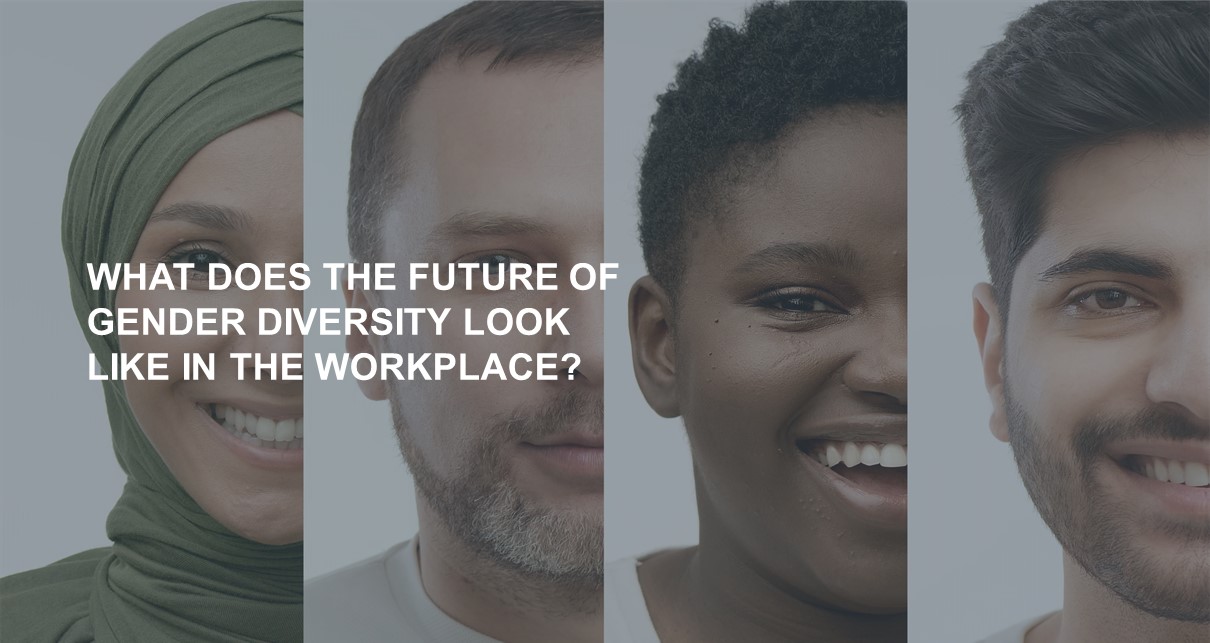

We have been asking people in our business, what they are going to do, to specifically help break gender bias in the workplace this year. I’ve been pondering this topic for a while now because, at times, I feel there is such a disconnect between the biases we aim to break, and the biases the system allows us to break. How do we truly break the bias against women in the workplace, for example? How do we answer the question that after years of gender initiatives, we are still so far away from gender equality in the top jobs? Why, five years after #metoo went viral, did a 2021 UK Government survey find that a staggering 30% of women have experienced sexual harassment in the workplace? The questions keep on coming, but the answers are limited.
First, let’s break the bias against intersectionality
Looking at the future of Gender Diversity, I think it is important that we break the bias against some terms that have been misused and misunderstood but are hugely important if we want to attempt to answer some of the questions above. There are several of them, not in the least the word ‘feminism’ itself. But today, I want to explore the term ‘intersectionality’.
The concept of intersectionality was first described by Professor Kimberlé Crenshaw, who coined the term in 1989. Her work was born out of critical race theory and particularly racism in the American legal system. While evidence of racism in the structures of law and society is ample now, there weren’t many tools to understand that reality in the early 1980s. In her analysis of three legal cases, Crenshaw laid out the theory of intersectionality wherein she argued against treating race and gender as mutually exclusive categories of experience and analysis. This concept was largely contained within critical race theory until 2017 when it gained widespread attention during the Women’s March. The word now leads three quite distinct lives. One, the academic life based on what Crenshaw had meant by the term. Two, the activist life, an interpretation used to seek elimination of disparities between groups. And three, the American conservative’s life, to respond to those activists. Thus, the term has now travelled quite far away from context and content!
Is there a case against intersectionality?
Interestingly, all three interpretations of the term seem to agree with the theory behind intersectionality. Namely, the idea that individuals experience the world differently based on their different identities. The world is experienced differently by a Black man than it is by a Black woman. And a white woman is going to experience sexism differently to an Asian woman, or a Disabled woman, and so on. Issues do start to surface, however, when theory is applied to practice. Because what does this mean in reality? What bearing does intersectionality have on gender diversity in the world of work today?
A common – and in my view extremely simplistic – critique of intersectionality is that it becomes a form of identity politics, by some described as a ‘hierarchy of victimhood’. Crenshaw herself counters this by saying that this critique in fact affirms the fundamental truth of the theory: namely, that different lived identities will impact the way that people are viewed, understood, and treated. In the activist arena, the term has led to, at times uncomfortable, evaluations of equality efforts.
Looking at women’s rights, those include: are we truly addressing gender equity in the workplace if we aren’t specifically acknowledging the different experiences of women of colour? Are we harming advances in gender equality by ignoring and excluding the voices of trans women? Are gender equality initiatives in the workplace ignoring huge socio-economic disparities, by replacing rich white men with rich white women?
Putting intersectionality in practice thus leaves us with unanswered and difficult questions, and this may explain why some well-meaning workplace gender diversity initiatives don’t stand the test of time.
Why it’s important to keep intersectionality in mind
So, what can we do? My advice would be to not try to simplify gender initiatives and always keep intersectionality in mind. There is no ‘one size fits all’ or ‘quick fix’ when it comes to addressing these issues.
We cannot continue to ignore the complexities and diversities of peoples’ lived experiences or the inequal structures that keep our current system in place. One such example here is modern-day feminist theory – where employers will often solely consider the Western White women perspective while overlooking the experiences of women outside of that group. I believe that identity and the intersections of identities should be key to any Diversity and Inclusion debate that we have.
Perhaps, in the end, it is about accepting that complexity. Take International Women’s Day for example, with assuming the gender binary (men versus women) the day itself can act exclusionary for non-cis people. Does that mean we should not celebrate IWD? Absolutely not! But it does mean we should be mindful of that, and not attempt to paint everything in the same brush? Yes, exactly that.
Finally, I will leave you with this: It is important to remember that it is not the job of the oppressed to remove the barriers that they face. Today it is a sad fact that there are more CEOs called Peter than there are women in the top job. If we are too afraid or uncomfortable to address intersectional barriers, then this will surely still be the case for years to come.
What can employers do?
1. Don’t assume someone’s identity and try to become aware of your own biases. Take a look at Harvard University’s project implicit tests, which can help you identify where you may have strong biases.
2. When creating mentoring or networking programmes for women in your firm ensure they keep intersectionality in mind – challenges are not going to be the same for everybody – and everybody should have a forum to share their unique experience. Measuring the effect of these initiatives is important too. Are your initiatives contributing to higher retention and promotion rates for your female staff.
3. Consider setting up specific strategies to recognise the barriers women of colour may encounter, acknowledging their lived experience here is key.
4. Challenge yourself to think beyond the gender binary, are we excluding non-cis people with certain initiatives, and if we are, how can we ensure inclusion?
I’d love to hear how your organisation will be helping to #BreakTheBias this year. Please do not hesitate to contact me.
Similar blogs

.jpg)



